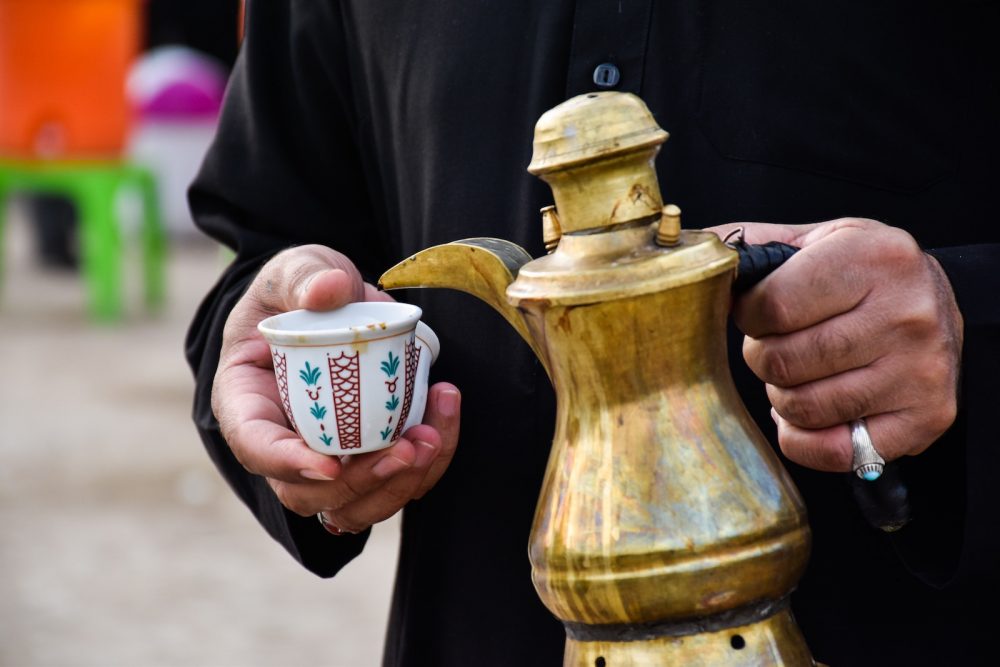Halima steps out of her home and into the bright mid-morning sun. Carrying a carafe of cardamom-infused coffee, she walks down the sandy street to a friend’s house where she’ll exchange small cups of the national beverage while catching up on local gossip.
Like most women in the Middle Eastern country of Oman, Halima takes coffee seriously. The process of grinding, preparing, and sharing the brew with friends is a daily ritual for Halima.
Coffee culture originated in Halima’s part of the world—in the Middle East and Northeast Africa.
In Arabic, coffee is called qahwah. The word entered Turkish as kahveh, which is where we get the English word for the drink.
Coffee culture originated in Halima’s part of the world—in the Middle East and Northeast Africa.
According to tradition, coffee berries were discovered in the ninth century by a young goat herder who saw how lively his goats became after eating from the shrub. He sampled the red berries for himself and experienced the same jolt of energy.
One legend says that the goat herder took the berries to the local mosque. He shared them with the imam who often struggled to stay awake through early morning prayers. The imam dried, boiled, and infused the berries into an elixir—and coffee was born.
The popularity of this magical brew quickly spread throughout the Middle East. By the sixteenth century, coffee houses were opening up in Turkish cities and Arab traders began exporting beans from Yemen to Europe.
Today’s coffee culture in the Arab world is more social than it is about getting a caffeine fix. In many Middle Eastern communities, people drink it even late into the evening while visiting friends and family.
According to tradition, coffee berries were discovered in the ninth century by a young goat herder.
Unlike the American version that is traditionally brewed through a filter, Arabic and Turkish coffee is unfiltered. Finely ground beans are steeped in a small pot, and then the coffee is served in a 3-ounce cup with some grounds still in it. Sometimes cardamom and other spices are added for flavor.
Brewing Arabic or Turkish coffee is easy. Follow the recipe below to make two small cups to sample with a friend. You’ll need either a small saucepan or a traditional Arabic coffeepot with a long handle.
What You’ll Need
- 1 cup cold water
- 1 tablespoon finely ground coffee, powder consistency
- Optional: 1 crushed cardamom pod or a dash of ground cardamom
- Small Arabic coffeepot or saucepan
- 2 4-ounce demitasse cups or small mugs
How to Brew
- Combine water, coffee, and cardamom in the coffeepot or saucepan. Over medium heat, slowly bring it to a boil while watching closely.
- Dark foam will build up on the surface and rise. Remove from heat before it spills over.
- Let the foam fall, then return to heat. Allow it to foam up once more and remove from heat.
- Pour into two demitasse cups. Let sit for a minute or so to allow the grounds to settle, then serve and enjoy!
A Frontiers family new to the field hopes some homemade baked goods will open the door to friendships with their neighbors.
